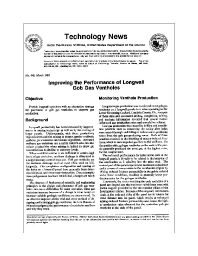 |
Longwall productivity has been increased by improvements in mining technology as well as by the mining of larger panels. Unfortunately, with these productivity improvements and the mining of deeper, gassier coalbeds, methane gas emissions can become a problem. Increased methane gas emissions are a safety concern and can also reduce productivity when mining is halted to allow gas concentrations to decline to statutory levels. When ventilation alone is not sufficient to control high levels of gas emissions, methane drainage is often used as a supplementary control measure. Gob gas ventholes are the methane drainage method most often used on U.S. longwalls. The completion configuration and spacing of the holes on a longwall panel have generally been determined by trial-and-error experimentation. Once a completion configuration has been established, changes are rarely made. The absence of fundamental scientific and engineering principles in the design and placement of gob gas ventholes can cause difficulties for mine operators when gas emissions increase because of a change in mine design or because variable geologic conditions are encountered. In an effort to improve on the trial-and-error method of designing and locating gob gas ventholes, the U.S. Bureau of Mines investigated the performance of such holes and how and why they work.
| Author(s): | USBM |
| Reference: | Pittsburgh, PA, U.S. Department of the Interior, Bureau of Mines, Technology News 448, 1995 Mar :1-2 |
tl448 (PDF, 64 KB)